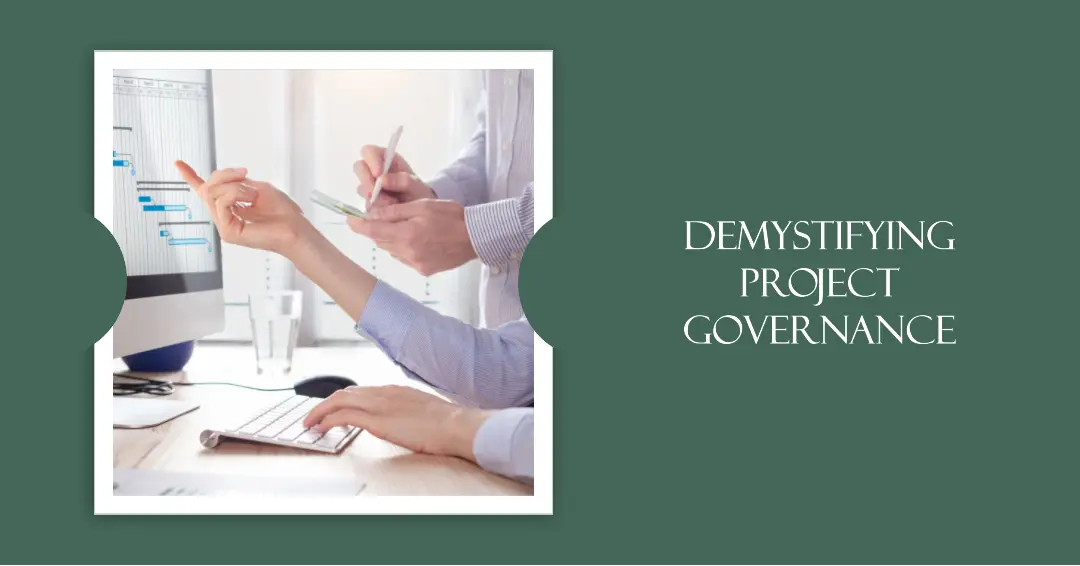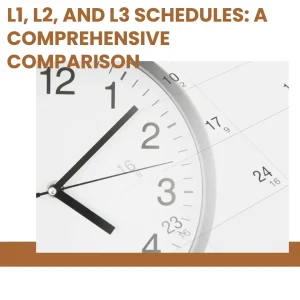I. Introduction
Have you ever wondered why some projects seem to run smoothly and achieve their objectives, while others seem to stumble at every step and eventually fail? The answer might be hidden in the way these projects are governed. In today’s fast-paced business world, project governance is becoming an increasingly crucial aspect of project management. But what exactly is project governance, and why is it so important?
A. Definition of project governance
Project governance refers to the set of principles, processes, and structures that provide guidance, oversight, and control over a project. It establishes a framework for making project-related decisions, managing risks, and ensuring that the project stays on track to achieve its objectives. In simpler terms, project governance is like a compass that helps project teams navigate the complex and sometimes chaotic world of project management.
B. Importance of project governance in project management
You might be wondering, “Why should I care about project governance?” Well, let me tell you that project governance plays a vital role in the success or failure of a project. It helps align projects with organizational objectives, ensures that resources are used effectively, and provides a clear roadmap for decision-making. In essence, good project governance is the foundation upon which successful projects are built.
C. Goals of project governance
The primary goals of project governance are to:
- Align projects with organizational objectives: Project governance ensures that projects contribute to the overall goals and strategies of the organization.
- Provide a framework for decision-making: Project governance offers a structured process for making project-related decisions, which helps in preventing costly mistakes and delays.
- Ensure accountability and transparency: By clearly defining roles and responsibilities, project governance helps hold team members accountable for their actions and promotes transparency in decision-making.
- Manage risks and resources: Project governance includes mechanisms for identifying, assessing, and mitigating risks, as well as allocating resources effectively.
- Evaluate project performance: Project governance involves monitoring and measuring project performance to ensure that the project stays on track and delivers the desired outcomes.
Now that you have a basic understanding of what project governance is and why it’s so important let’s dive deeper into its role in project management, key components, and how it can impact project success. Stay with me as we explore the fascinating world of project governance!
II. The Role of Project Governance in Project Management
As we continue our journey into the world of project governance, it’s essential to understand the pivotal role it plays in project management. In this section, we will explore how project governance helps in aligning projects with organizational objectives, provides a framework for decision-making, ensures accountability and transparency, manages risks and resources, and evaluates project performance.
A. Aligning projects with organizational objectives
Imagine starting a project without knowing how it fits into your organization’s bigger picture. Sounds chaotic, right? This is where project governance comes in. It acts as a guiding force that ensures every project aligns with the organization’s overall goals and strategies. By doing so, project governance helps create a sense of purpose and direction for the project team, ultimately leading to better project outcomes.
B. Providing a framework for decision-making
Every project, big or small, involves numerous decisions that can significantly impact its outcome. Project governance offers a structured process for making these critical decisions, reducing the chances of costly mistakes and delays. This framework not only helps in making informed decisions but also ensures that the decision-making process is consistent and transparent across the entire organization.
C. Ensuring accountability and transparency
It’s no secret that accountability and transparency are key to any project’s success. Project governance achieves this by clearly defining roles and responsibilities for all team members, ensuring everyone knows what is expected of them. This clarity helps in holding team members accountable for their actions and promotes transparency in decision-making, leading to increased trust and collaboration within the project team.
D. Managing risks and resources
Projects often come with their fair share of risks and uncertainties. A strong project governance framework includes mechanisms for identifying, assessing, and mitigating these risks, ensuring that the project stays on track despite potential roadblocks. Additionally, project governance helps in allocating resources effectively, making sure that every project receives the necessary support and investment to succeed.
E. Evaluating project performance
Last but not least, project governance plays a crucial role in evaluating project performance. By establishing key performance indicators (KPIs) and setting up regular reporting cycles, project governance helps monitor the project’s progress, ensuring it stays on track to achieve its objectives. This ongoing evaluation allows for timely corrective actions if the project deviates from its planned course, ultimately contributing to its success.
Now that we’ve seen the critical role project governance plays in project management, let’s move on to the key components that make up an effective project governance framework. Join me as we delve deeper into the fascinating aspects of project governance!
III. Key Components of Project Governance
As we continue to unravel the mysteries of project governance, it’s essential to understand its key components. These components form the foundation of a robust and effective governance framework. In this section, we will dive into the three main elements of project governance: governance structure, policies and procedures, and reporting and performance measurement.
A. Governance structure
- Governance board/committee
At the heart of any project governance framework lies the governance board or committee. This group of individuals, typically composed of senior executives and key stakeholders, is responsible for providing strategic direction, overseeing project progress, and ensuring that projects align with organizational objectives. The board or committee acts as the project’s steering force, guiding it towards success.
- Roles and responsibilities
A well-defined governance structure also includes clear roles and responsibilities for all project team members. This clarity helps in fostering accountability and transparency within the project, ensuring that everyone knows what is expected of them. Clearly defined roles and responsibilities also help in streamlining decision-making and collaboration, making the project run more smoothly.
B. Policies and procedures
- Decision-making process
A key aspect of project governance is the establishment of policies and procedures that guide decision-making. These guidelines outline the decision-making process, ensuring that all project-related decisions are made consistently and transparently. By following a standardized decision-making process, project teams can avoid costly mistakes and delays, ultimately improving project outcomes.
- Risk management
Managing risks is an integral part of project governance. Governance policies and procedures should include a systematic approach to identifying, assessing, and mitigating risks. By having a well-defined risk management process in place, project teams can proactively address potential issues, ensuring that the project stays on track despite any unforeseen challenges.
- Financial management
Effective project governance also involves establishing policies and procedures for financial management. This includes budgeting, financial reporting, and cost control, which are crucial for ensuring that project resources are used effectively and efficiently. Proper financial management not only helps in preventing cost overruns but also contributes to the overall success of the project.
- Quality management
A commitment to quality is vital in any project, and project governance plays a key role in ensuring that quality standards are met. Governance policies and procedures should outline quality management processes, such as quality planning, assurance, and control. By adhering to these processes, project teams can ensure that the project’s final deliverables meet the desired quality standards.
- Communications management
Communication is the lifeblood of any project, and project governance policies and procedures should include guidelines for effective communication. These guidelines should cover various aspects of communication, such as information sharing, stakeholder engagement, and reporting. By following these guidelines, project teams can ensure that information flows smoothly throughout the project, enhancing collaboration and transparency.
C. Reporting and performance measurement
- Key performance indicators (KPIs)
Monitoring and measuring project performance is crucial for project success, and project governance plays a pivotal role in this process. Establishing key performance indicators (KPIs) helps project teams track their progress towards project objectives, allowing them to make data-driven decisions and take corrective actions as needed.
- Regular reporting cycles
Project governance also involves setting up regular reporting cycles to keep stakeholders informed about project progress. This includes status updates, financial reports, and risk assessments, which help in maintaining transparency and accountability within the project. Regular reporting also allows for timely identification and resolution of issues, ensuring that the project stays on track.
- Performance reviews and audits
Periodic performance reviews and audits are another essential component of project governance. These reviews help in evaluating the effectiveness of project governance practices, identifying areas for improvement, and ensuring compliance with established policies and procedures. By conducting regular performance reviews and audits, organizations can continuously refine their project governance framework, leading to better project outcomes and overall success.
Now that we have explored the key components of project governance, you should have a better understanding of what it takes to establish a robust and effective governance framework. But how does project governance impact project success, and what are the best practices for implementing it? Stay with me as we continue our exciting journey into the world of project governance!
IV. The Impact of Effective Project Governance on Project Success
As we’ve seen so far, project governance is an essential aspect of project management. But how exactly does it contribute to project success? In this section, we’ll explore the various ways in which effective project governance can positively impact project outcomes and lead to overall success.
A. Improved project alignment with organizational goals
When project governance is in place, projects are more likely to align with an organization’s objectives and strategies. This alignment ensures that projects contribute to the organization’s overall success and provide a greater return on investment. It also helps project teams maintain a clear sense of purpose and direction, ultimately leading to better project outcomes.
B. Enhanced decision-making and risk management
A robust project governance framework provides a structured process for decision-making, helping project teams make informed and consistent decisions. This, in turn, reduces the chances of costly mistakes and delays. Furthermore, project governance allows for proactive risk management, enabling teams to identify, assess, and mitigate potential risks before they become major roadblocks. In essence, effective project governance contributes to better decision-making and risk management, which are key factors in project success.
C. Increased stakeholder satisfaction and confidence
Transparent and accountable project governance practices help build trust and confidence among stakeholders. When stakeholders are aware of project progress, risks, and decision-making processes, they are more likely to support the project and its objectives. This increased stakeholder satisfaction can lead to better collaboration and a higher likelihood of project success.
D. Reduced likelihood of project failure
Effective project governance reduces the likelihood of project failure by providing a clear roadmap for project teams to follow. This roadmap includes clear roles and responsibilities, established policies and procedures, and regular performance monitoring and reporting. By adhering to these practices, project teams can identify potential issues early on, take corrective actions when needed, and ultimately increase the chances of project success.
Now that we’ve seen the positive impact of project governance on project success, it’s time to learn about the best practices for implementing project governance in your organization. Join me in the next section as we delve into the secrets of successful project governance implementation!
V. Best Practices for Implementing Project Governance
Now that we understand the importance of project governance and its impact on project success, it’s time to learn how to put it into practice. In this section, we’ll discuss some best practices for implementing project governance in your organization. By following these guidelines, you’ll be well on your way to establishing an effective governance framework that leads to successful project outcomes.
A. Establish a clear governance structure and define roles
A solid project governance framework starts with a clear governance structure. This includes setting up a governance board or committee responsible for overseeing project progress and ensuring alignment with organizational objectives. Make sure to define the roles and responsibilities of all project team members clearly, fostering accountability and transparency within the project.
B. Develop comprehensive policies and procedures
Establishing well-defined policies and procedures is another essential step in implementing project governance. These guidelines should cover various aspects of project management, such as decision-making, risk management, financial management, quality management, and communications management. By adhering to these policies and procedures, project teams can ensure consistency and transparency in their actions, leading to better project outcomes.
C. Establish performance measurement and reporting systems
Monitoring and measuring project performance is crucial for project success. Set up key performance indicators (KPIs) to track progress towards project objectives and establish regular reporting cycles to keep stakeholders informed about project status. This ongoing evaluation allows for timely corrective actions if the project deviates from its planned course, ultimately contributing to its success.
D. Regularly review and update governance practices
Project governance is not a one-time activity but rather an ongoing process. Regularly review and update your governance practices to ensure their continued effectiveness and alignment with organizational objectives. Conduct periodic performance reviews and audits to identify areas for improvement and ensure compliance with established policies and procedures. By continuously refining your project governance framework, you can improve project outcomes and overall success.
As we wrap up this section, remember that implementing project governance is a journey, not a destination. By following these best practices and continuously refining your governance framework, you’ll be well-equipped to face the challenges that come with managing projects and ultimately achieve project success. But what are some common challenges organizations face when implementing project governance, and how can they be overcome? Join me in the next section as we discuss overcoming obstacles on the path to effective project governance!
VI. Overcoming Challenges in Implementing Project Governance
As we venture further into the world of project governance, it’s essential to acknowledge that implementing it in your organization might not be a walk in the park. Challenges may arise along the way, but fear not! In this section, we’ll discuss some common obstacles organizations face when implementing project governance and offer practical tips on how to overcome them.
A. Resistance to change
Change can be daunting, and resistance to new practices is a common challenge when implementing project governance. To overcome this resistance, it’s crucial to communicate the benefits of project governance clearly and involve stakeholders in the process. By demonstrating how project governance contributes to project success and organizational growth, you can help build support for the change.
B. Insufficient resources and expertise
Implementing project governance may require additional resources and expertise that your organization might not have at its disposal. To tackle this challenge, consider investing in training and development programs for your project team members. Additionally, you can seek external support from consultants or experts in the field who can help guide your organization through the implementation process.
C. Inadequate communication and collaboration
Effective communication and collaboration are essential for successful project governance implementation. To overcome challenges related to communication, establish clear channels for information sharing and encourage open dialogue among stakeholders. Make sure to keep everyone informed about project progress, risks, and decisions, fostering transparency and trust within the project team.
D. Balancing flexibility and control
Striking the right balance between flexibility and control is another challenge when implementing project governance. Overly rigid governance structures can stifle creativity and innovation, while too much flexibility may lead to inconsistency and confusion. To find the right balance, consider tailoring your governance practices to the unique needs and characteristics of each project while maintaining a consistent set of core principles and guidelines.
E. Measuring and demonstrating the value of project governance
Measuring the impact of project governance on project success can be challenging, but it’s essential to demonstrate its value to stakeholders. To overcome this challenge, establish key performance indicators (KPIs) that track the effectiveness of your governance practices and use regular reporting cycles to share these metrics with stakeholders. By showcasing the tangible benefits of project governance, you can build support for its continued implementation and refinement.
As you embark on your project governance journey, keep in mind that overcoming challenges is part of the process. By addressing these obstacles head-on and learning from your experiences, you can establish a robust and effective governance framework that ultimately leads to project success.
VII. Conclusion
As we reach the end of our enlightening journey into the world of project governance, let’s take a moment to reflect on the key takeaways and insights we’ve gathered along the way.
A. The importance of project governance in ensuring project success
Throughout our exploration, we’ve seen that project governance plays a critical role in ensuring project success. By aligning projects with organizational objectives, providing a framework for decision-making, ensuring accountability and transparency, managing risks and resources, and evaluating project performance, project governance serves as a guiding force that drives projects towards their goals.
B. Implementing effective governance practices to improve project outcomes
We’ve also learned about the best practices for implementing project governance in your organization. By establishing a clear governance structure, developing comprehensive policies and procedures, setting up performance measurement and reporting systems, and continuously refining your governance practices, you can create a robust framework that leads to successful project outcomes.
In conclusion, project governance is an indispensable aspect of project management that should not be overlooked. By understanding and embracing the principles of project governance and putting them into practice, you’ll be well-equipped to navigate the complex world of project management and achieve the success you and your organization strive for.
Thank you for joining me on this exciting journey! I hope you found it as enlightening and engaging as I did. As you move forward, keep the lessons learned in mind, and remember that implementing effective project governance is an ongoing process that requires commitment, adaptability, and continuous improvement. Here’s to your project success!
To find out how Artificial Intelligence is changing the Project Management landscape, you have enjoy reading this article https://www.shaunstoltz.com/did-artificial-intelligence-just-change-everything-about-project-management/
Find out more about Shaun Stoltz https://www.shaunstoltz.com/about/
This post was written by an AI and reviewed/edited by a human.



